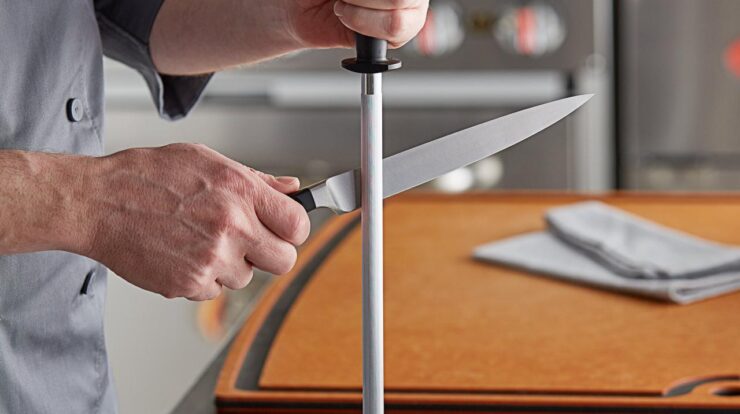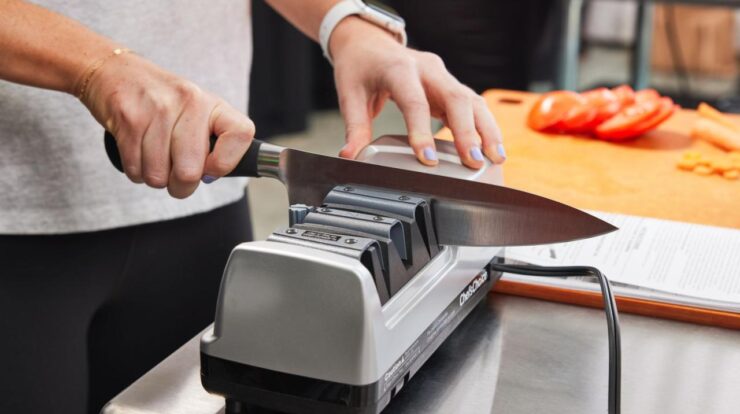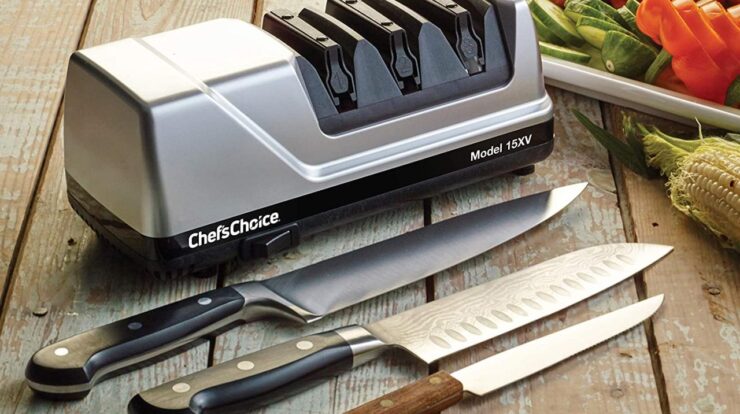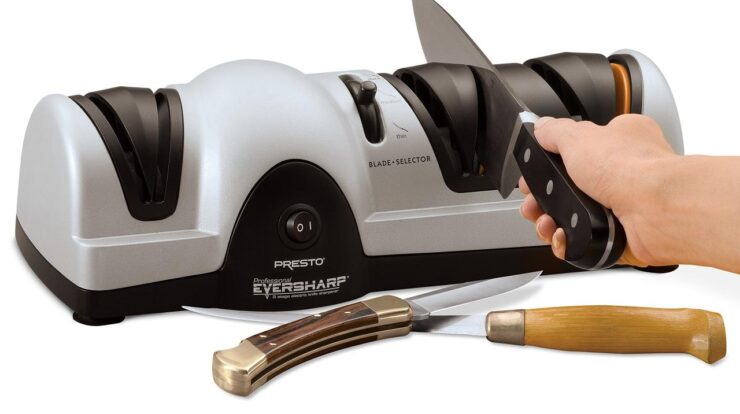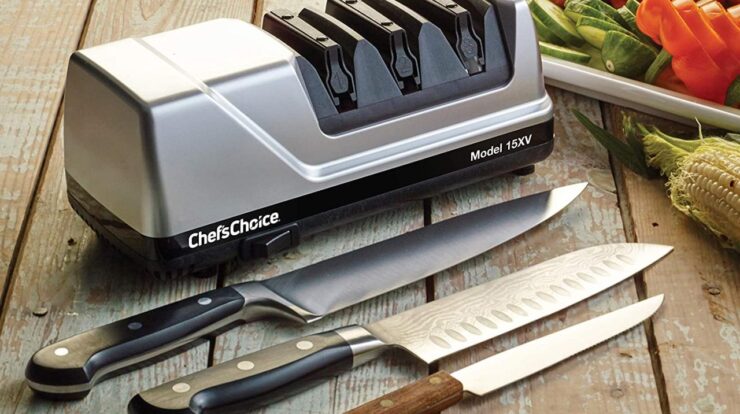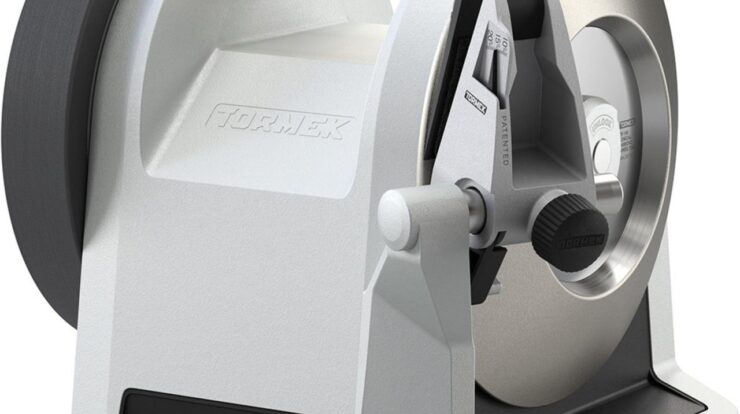Step into the world of kitchen knife sharpeners, where the art of precision meets culinary excellence. From the humble whetstone to the electric marvels of the modern age, embark on a journey that will transform your knives into razor-sharp companions, ready to conquer any culinary challenge.
In this comprehensive guide, we’ll explore the intricacies of kitchen knife sharpeners, empowering you to make informed decisions and choose the perfect tool for your needs. Discover the secrets of proper sharpening techniques, unravel the factors that influence sharpening effectiveness, and delve into the art of maintaining your sharpeners for optimal performance.
Types of Kitchen Knife Sharpeners
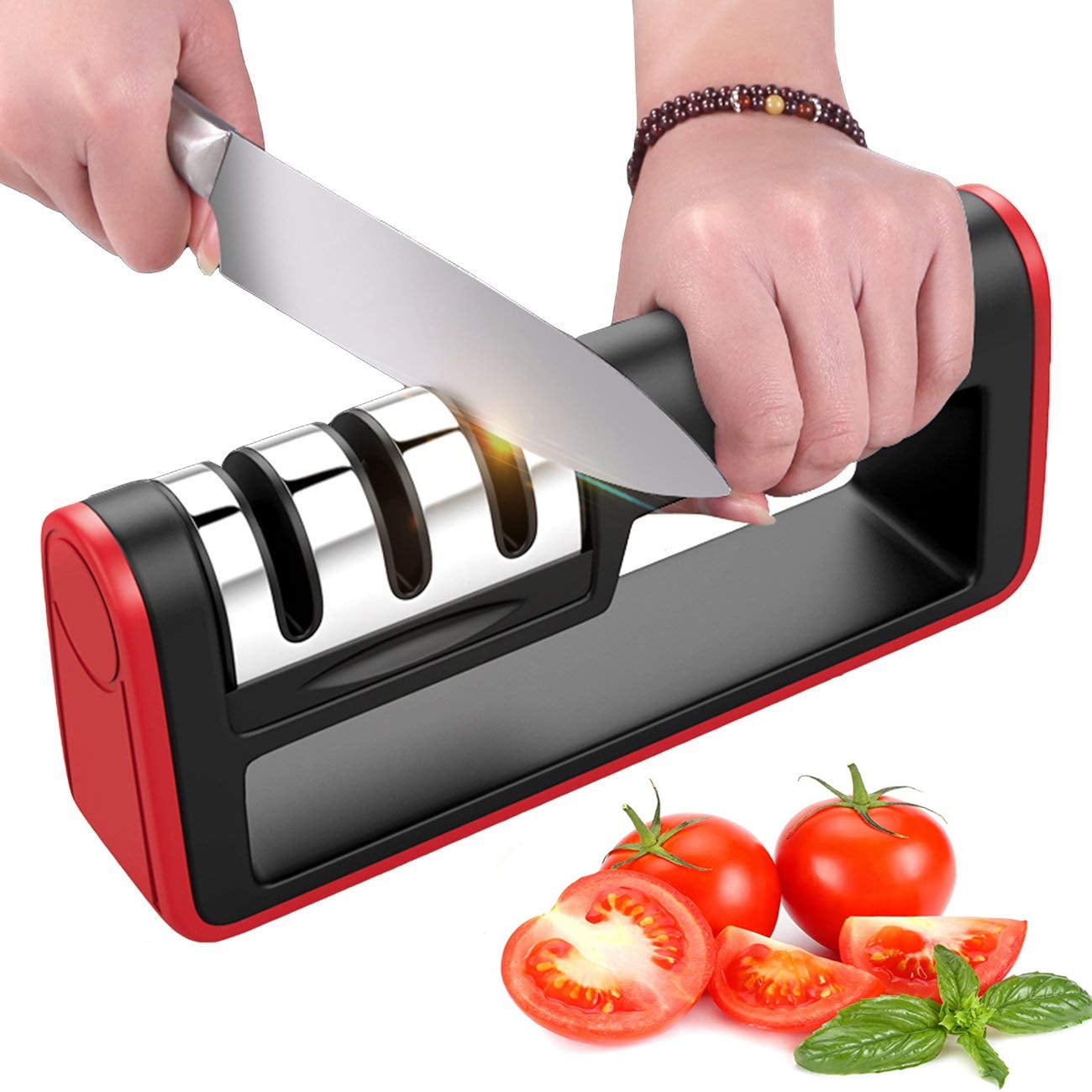
Maintaining sharp kitchen knives is crucial for safe and efficient food preparation. Understanding the different types of knife sharpeners available empowers you to choose the most suitable one for your needs.
Manual Sharpeners
- Sharpening Stones: Traditional sharpening stones, also known as whetstones, are made from abrasive materials like ceramic or diamond. They require skill to use and provide precise control over the sharpening angle.
- Sharpening Steels: These handheld tools have a grooved surface that helps align and straighten the knife’s edge. They are ideal for quick touch-ups but do not remove significant amounts of metal.
- Pull-Through Sharpeners: These compact devices have a series of slots or rods that guide the knife through a fixed angle. They are convenient but may not provide as precise sharpening as manual methods.
Electric Sharpeners
- Electric Sharpening Wheels: These machines use rotating abrasive wheels to sharpen knives. They are fast and easy to use but can be less precise than manual methods and may remove more metal.
- Electric Pull-Through Sharpeners: Similar to manual pull-through sharpeners, these devices use an electric motor to pull the knife through sharpening slots.
- Angle-Controlled Sharpeners: These advanced electric sharpeners use precise guides to maintain the correct sharpening angle. They provide consistent results but can be more expensive.
Advantages and Disadvantages
- Manual Sharpeners: Advantages: Precise control, cost-effective, durable. Disadvantages: Require skill, time-consuming.
- Electric Sharpeners: Advantages: Fast, convenient, easy to use. Disadvantages: Less precise, may remove more metal, can be expensive.
The best type of knife sharpener depends on individual preferences, skill level, and budget. Manual sharpeners offer greater precision and control, while electric sharpeners provide convenience and speed. Consider the type of knives you use, your frequency of sharpening, and your comfort level with different methods before making a choice.
Factors to Consider When Choosing a Kitchen Knife Sharpener
Selecting the ideal kitchen knife sharpener necessitates careful consideration of several key factors. These factors include the blade material, sharpening angle, and ease of use. Understanding the significance of each factor will assist you in selecting the sharpener that best suits your individual needs and preferences.
Blade Material
The material of your knife blade plays a crucial role in determining the type of sharpener you need. Different blade materials require different sharpening techniques and angles. For instance, harder blade materials, such as high-carbon steel or ceramic, necessitate sharpeners with specialized abrasives and finer grits.
Sharpening Angle
The sharpening angle refers to the angle at which the knife’s edge is sharpened. Different knives have optimal sharpening angles, depending on their intended use. For example, chef’s knives typically require a 20-degree angle, while paring knives may require a smaller angle of around 15 degrees.
Ease of Use
The ease of use of a knife sharpener is an important consideration, especially for those who may not be experienced in sharpening knives. Look for sharpeners that are easy to assemble, hold, and maneuver. Some sharpeners feature ergonomic handles and non-slip bases for added comfort and safety.
Whether you’re a seasoned golfer or just starting out, finding the right set of clubs is crucial. If you’re on a budget, consider purchasing used Top Flite golf clubs . These clubs offer excellent value for money, providing a great way to improve your game without breaking the bank.
Techniques for Using a Kitchen Knife Sharpener
Sharpening kitchen knives is an essential task for maintaining their performance and safety. By following proper techniques, you can effectively restore the sharpness of your knives and extend their lifespan. Here are the key techniques for using different types of kitchen knife sharpeners:
Manual Sharpeners
Manual sharpeners, such as whetstones and sharpening rods, require some skill and practice to use effectively. Here’s how to use them:
- Whetstones:Soak the whetstone in water for 10-15 minutes before use. Hold the knife at a 15-20 degree angle to the stone and slide it along the surface in a circular motion. Apply gentle pressure and maintain a consistent angle throughout the process.
- Sharpening Rods:Hold the rod vertically and place the heel of the knife at the base. Slide the knife down the rod in a smooth, sweeping motion, maintaining a 20-25 degree angle. Repeat on the other side of the blade.
Electric Sharpeners
Electric sharpeners are convenient and easy to use, but it’s important to follow the manufacturer’s instructions carefully to avoid damaging your knives:
- Pull-Through Sharpeners:Insert the knife into the sharpening slots and pull it through in one smooth motion. Repeat several times, alternating sides of the blade.
- Electric Sharpening Wheels:Hold the knife perpendicular to the sharpening wheel and gently apply pressure as you move it back and forth. Avoid over-sharpening, as this can weaken the blade.
Safety Precautions and Maintenance
When using any type of kitchen knife sharpener, always prioritize safety:
- Wear cut-resistant gloves to protect your hands.
- Keep the sharpener stable on a flat surface.
- Avoid using excessive force or pressure.
- Clean and lubricate the sharpener regularly to ensure optimal performance.
Benefits of Using a Kitchen Knife Sharpener

Regularly using a kitchen knife sharpener offers numerous advantages that enhance your cooking experience. Sharp knives not only improve efficiency and safety in the kitchen but also elevate the presentation of your dishes.
Sharp knives make it easier to cut through ingredients with precision, reducing the time and effort required for food preparation. They also minimize tearing and bruising, preserving the texture and appearance of your ingredients. Moreover, sharp knives provide greater control, reducing the risk of accidents and injuries.
Enhanced Cooking Efficiency
- Effortless slicing and dicing of vegetables, fruits, and meats
- Reduced preparation time due to increased cutting speed
- Improved precision, leading to consistent cuts and shapes
Increased Safety
- Reduced risk of slips and cuts due to better control
li>Less force required to cut, minimizing strain and fatigue
Improved Food Presentation
- Precise cuts enhance the visual appeal of dishes
- Even slices and dices create visually stunning presentations
- Sharp knives allow for intricate carving and garnishing
Maintenance and Care of Kitchen Knife Sharpeners
Maintaining and caring for your kitchen knife sharpener is crucial to ensure its longevity and optimal performance. Here are some essential steps to follow:
Cleaning, Kitchen knife sharpener
Regular cleaning is vital to prevent the accumulation of food particles and debris that can hinder the sharpener’s functionality. Wipe down the sharpener with a damp cloth after each use to remove any surface dirt or residue. For more thorough cleaning, disassemble the sharpener (if possible) and soak the components in warm soapy water.
Rinse thoroughly and dry completely before reassembling.
For serious athletes, the Garmin Fenix 7 vs 7 Pro is a must-have. This advanced smartwatch offers a wide range of features, including GPS tracking, heart rate monitoring, and performance analytics. Whether you’re running, cycling, or hiking, the Fenix 7 will help you stay on top of your fitness goals.
Lubrication
Lubrication is essential to reduce friction and wear on the sharpening mechanism. Apply a small amount of food-grade lubricant, such as mineral oil or white lithium grease, to the moving parts of the sharpener. This will help extend the lifespan of the sharpener and ensure smooth operation.
Storage
When not in use, store the sharpener in a dry, clean place. Avoid exposing it to moisture or extreme temperatures, as these can damage the components. Consider storing the sharpener in its original packaging or a protective case to prevent scratches or dust accumulation.
Summary: Kitchen Knife Sharpener
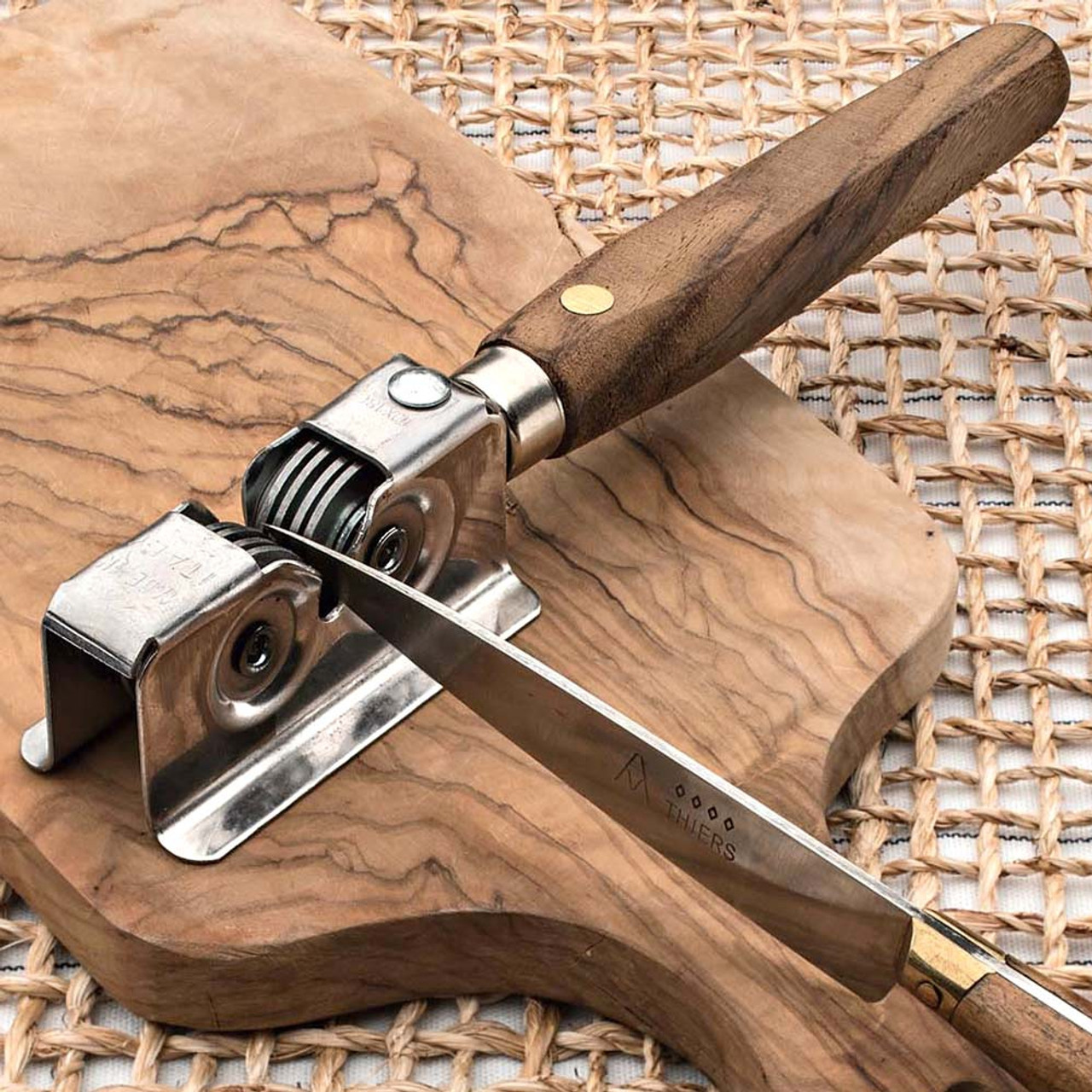
As you master the art of kitchen knife sharpening, you’ll unlock a new level of cooking prowess. Experience the joy of effortlessly slicing and dicing, the precision of delicate cuts, and the confidence that comes with knowing your knives are always ready to perform at their best.
Embrace the transformative power of a sharp knife and elevate your culinary adventures to new heights.
User Queries
How often should I sharpen my kitchen knives?
The frequency of sharpening depends on usage and care. Regular use may require sharpening every few months, while infrequent use may only require sharpening once or twice a year.
What is the best type of kitchen knife sharpener for home use?
For home cooks, manual sharpeners like whetstones or honing steels offer a balance of affordability, ease of use, and effectiveness.
Can I sharpen all types of knives with the same sharpener?
While most sharpeners can handle common kitchen knives, specialized sharpeners may be needed for serrated or exotic blade types.
